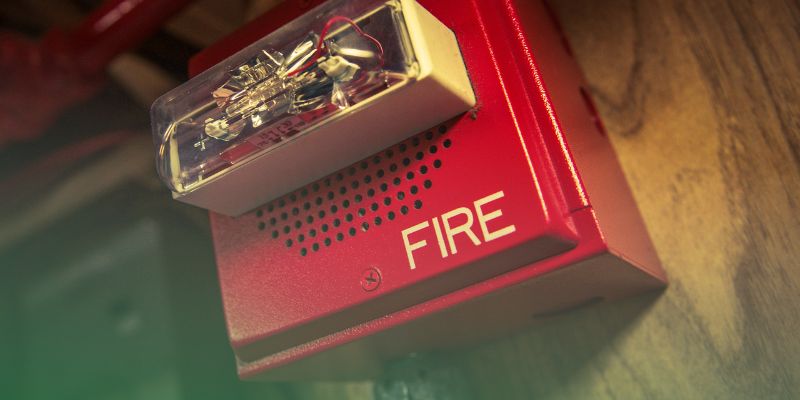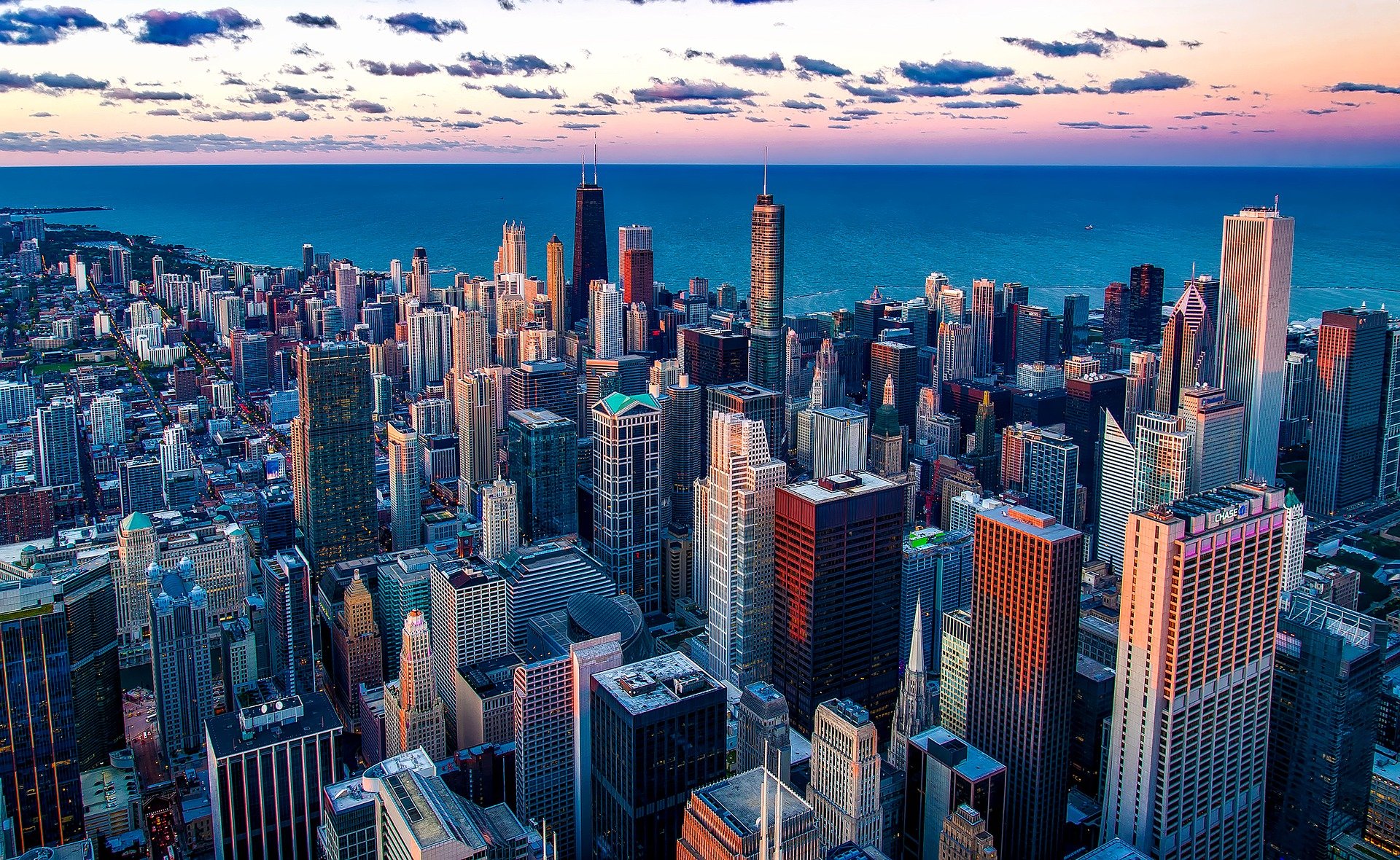
This article was published on 3-21-17 and updated on 1-21-25
The proper fire alarm system design and placement of strobes to provide visual notification is a critical component of fire alarm strobe requirements. Fire alarm strobe lights help to ensure effective communication, particularly for the hearing impaired, and ensure compliance with fire safety and accessibility standards.
Fire alarm system visual signals, commonly called strobes, are essential for alerting individuals with hearing impairments during emergencies. Their strategic placement helps protect occupants and meet legal requirements, making them a cornerstone of inclusive safety practices.
Several key standards govern fire alarm strobe installation standards:
- NFPA 72: National Fire Alarm and Signaling Code
This code outlines the design, installation, and performance criteria for fire alarm systems, including the placement of visual notification appliances. - International Building Code (IBC)
The IBC provides guidelines for structural and safety measures in all building types, ensuring that visual alarms are appropriately integrated into fire alarm systems. - Americans with Disabilities Act (ADA)
The ADA mandates accessibility features, including visual alarm devices, to ensure equitable safety for individuals with hearing impairments in public and common areas.
These fire alarm strobe requirements ensure compliance and reinforce a building’s commitment to occupant safety and inclusivity. Working with an experienced commercial fire alarm system provider will ensure compliance with all codes and regulations, including fire alarm strobe requirements.
Fire Alarm Strobe Light Code Requirements
Strobes are required in certain public and common areas as well as employee work areas.
Public and Common Areas
Strobes are required in public and common areas where individuals with hearing impairments are expected to be present. These locations include:
- Restrooms
- Hallways and lobbies
- Meeting rooms, conference rooms, and classrooms
- Cafeterias and employee break rooms
- Dressing rooms, examination rooms, and treatment rooms
By ensuring visual notification appliances are installed in these areas, fire alarm systems can effectively alert all occupants during emergencies, regardless of auditory ability.
Employee Work Areas
Unlike public areas, private employee workspaces, such as individual offices or workstations, are typically excluded from mandatory strobe placement. According to the ADA Accessibility Guidelines (ADAAG) and IBC, visual signals for fire alarm systems are not required in areas used solely by employees unless specifically requested.
However, IBC 907.5.2.3.2 stipulates that circuits serving these employee work areas must include a 20% spare capacity. This provision allows for the installation of visual alarms to accommodate employees with hearing impairments if needed.
This approach ensures flexibility, enabling buildings to remain compliant while addressing the diverse needs of their workforce over time.
Commercial Fire Alarm Code and Standards Guidance
HRSS/SMG is a Chicago commercial fire alarm provider with decades of experience and in-depth knowledge of all building codes and fire and life safety regulations.
NFPA 101: Life Safety Code
Under NFPA 101, areas not typically occupied by individuals with hearing impairments are exempt from the requirements for visible signals. For example, storage rooms or mechanical spaces do not require strobes unless they are frequented by employees with hearing impairments. This exemption allows flexibility in fire alarm system design while maintaining occupant safety.
IBC 907.5.2.3.2
The International Building Code mandates that circuits serving employee work areas be designed with 20% spare capacity to accommodate potential future installation of visible alarms. This ensures that the system can be upgraded to include strobes if an employee with a hearing impairment is hired.
The Americans with Disabilities Act Accessibility Guidelines (ADAAG) clarify that visual alarms are required in public spaces but not in private offices or workstations unless specifically requested. This distinction helps property managers focus resources where compliance is most critical while maintaining flexibility for future adjustments.
Industrial Building Fire Alarm Strobe Guidelines
Strobes are required in industrial and warehouse environments. Consulting with an experienced commercial fire alarm system provider is best to ensure compliance with all fire alarm strobe requirements.
Warehouses and Large Facilities
Determining warehouse fire alarm strobe placement in industrial settings presents unique challenges due to the scale and nature of these facilities. Key factors include:
- Occupancy Patterns and Operational Risks:
Warehouses are often staffed by individuals engaged in high-speed material handling, frequently operating forklifts and other machinery. These environments are typically not occupied by individuals with hearing impairments. Additionally, visitors to such facilities are usually escorted by trained personnel, reducing the necessity for widespread strobe coverage. - The Practicality of Strobes in High-Ceiling Spaces:
Warehouses often have ceilings that exceed 30 feet, which complicates strobe installation. According to NFPA 72 strobe placement, visual notification appliances are not designed to be effective at such heights, and the code provides limited guidance for installations above 30 feet. This makes high-mounted strobes impractical for delivering effective visual alerts and adds unnecessary expense for facilities that may not be required.
Audible Notifications
In industrial settings, audible alarms are the primary method for alerting occupants during emergencies. Key requirements include:
- Audible Signal Levels:
Alarms must achieve a sound level of at least 15 decibels (dB) above ambient noise to ensure they are heard throughout the facility. This requirement is critical in noisy environments, such as warehouses, where machinery and operational activities create significant background noise. - Primary Notification Method:
Audible alarms are prioritized over visual notifications in warehouses because they penetrate large spaces and alert workers engaged in focused or loud tasks. While visual strobes are necessary in certain support areas (e.g., offices, restrooms, and breakrooms), audible alarms are the most reliable means of communication for the primary workspace.
By focusing on these considerations, warehouse managers can ensure that fire alarm systems balance practicality and compliance, providing effective safety measures tailored to the unique demands of industrial environments.
Obligations of Building Owners and Managers for Strobe Placement
Building owners and managers are responsible for ensuring that a code-compliant fire alarm system is maintained and operational, with proper placement of all fire detection and notification devices, including emergency strobe lights.
Accommodating Employee Needs
Building owners and managers are legally obligated to modify fire alarm systems if an employee with a hearing impairment requires visual notification. This includes adding strobes to work areas and ensuring the systems are effectively integrated with existing alarms.
Proactive Planning
Incorporating flexibility into the initial design of fire alarm systems is essential. By allocating circuits with additional capacity and pre-wiring for strobes, building managers can avoid costly retrofits and ensure readiness for future compliance needs.
Compliance Responsibility
Adhering to local ordinances is critical, as some municipalities may impose stricter requirements than national standards. Building managers must stay informed about these variations and work with fire safety professionals to meet all applicable regulations.
Practical Commercial Fire Alarm Design Considerations
Experienced commercial fire alarm system design professionals can address all design considerations to provide code-compliant safety and protection for all occupants, including the hearing impaired. HRSS/SMG provides expert fire alarm system design with vast experience in all fire safety codes and regulations applicable to commercial buildings in Chicago. We go beyond code compliance and provide customized commercial fire alarm systems designed to save lives and property based on business operations and complex architectural design.
High-Ceiling Environments
Installing strobes in spaces with high ceilings, such as warehouses, poses significant challenges. NFPA 72 provides limited guidance for installations above 30 feet, making placing strobes in such locations impractical. Instead, practical solutions such as focusing on audible alarms or placing strobes in inaccessible support areas may be more effective.
Balancing Compliance and Practicality
Warehouses and large facilities require a custom commercial fire alarm system design. Balancing the need for compliance with operational limitations—such as avoiding interference with racking systems or material handling processes—is essential.
Customizing Fire Alarm Systems
A customized fire alarm system ensures that safety requirements are met without unnecessary expense or complexity. By aligning system design with both code requirements and the building’s operational needs, managers can provide optimal protection for all occupants.
Proper strobe placement is vital for ensuring compliance with fire safety codes and providing equitable safety measures for individuals with hearing impairments. By understanding the requirements of NFPA 72, IBC, and ADAAG and considering the unique challenges of different environments, building owners can create fire alarm systems that are both practical and compliant.
HRSS/SMG specializes in designing and implementing customized fire alarm systems that meet all regulatory standards while addressing the specific needs of your facility. Contact HRSS/SMG today for expert guidance on ensuring your building’s fire alarm system is fully compliant and optimized for safety with proper alarm notification and strobe placement.



